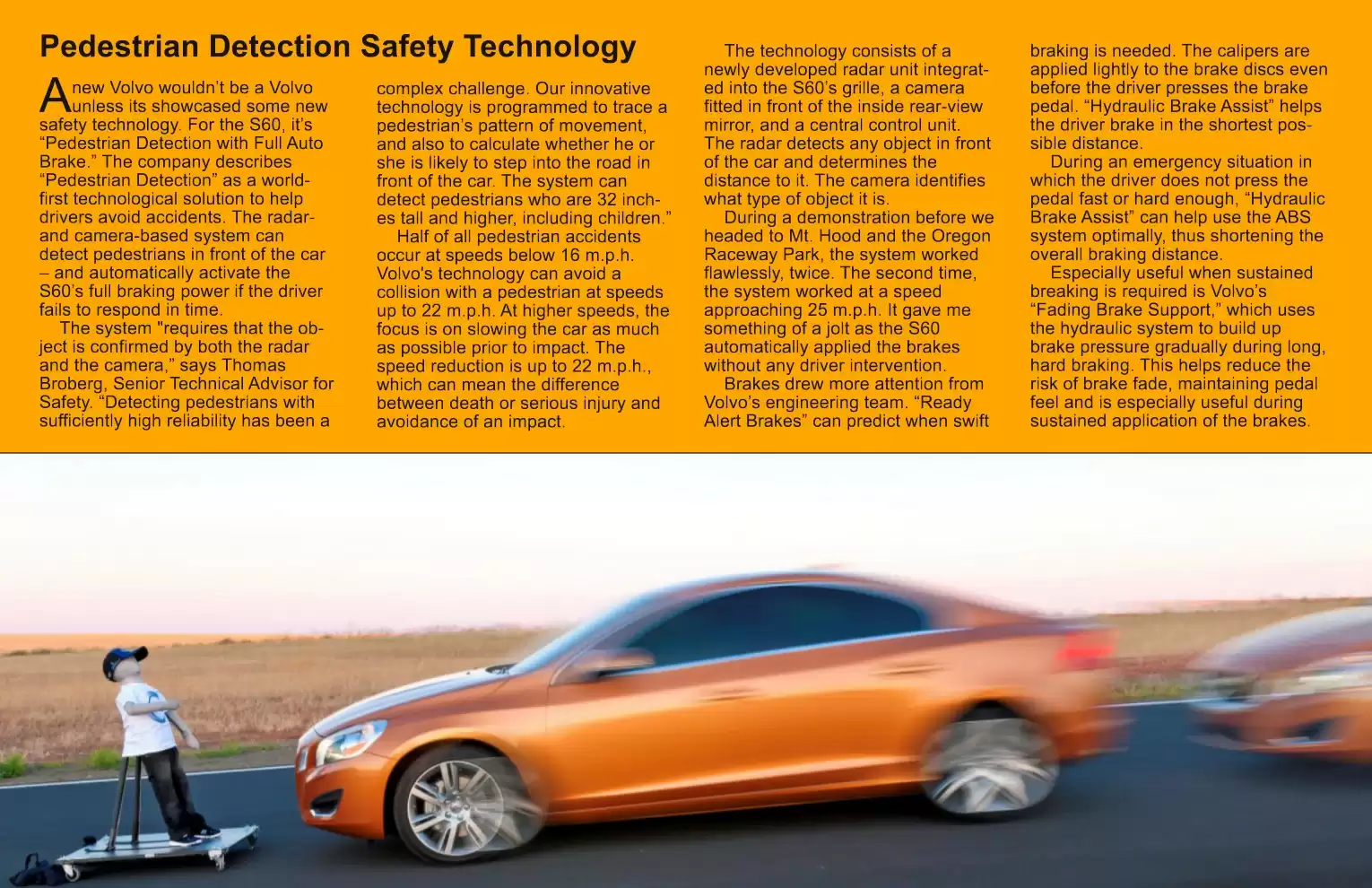
Sidebar: Pedestrian Detection Safety Technology
A new Volvo wouldn't be a Volvo unless its showcased some new safety technology. For the S60, it's "Pedestrian Detection with Full Auto Brake." The company describes "Pedestrian Detection" as a world-first technological solution to help drivers avoid accidents. The radar- and camera-based system can detect pedestrians in front of the car--and automatically activate the S60's full braking power if the driver fails to respond in time.
The system "requires that the object is confirmed by both the radar and the camera," says Thomas Broberg, Senior Technical Advisor for Safety. "Detecting pedestrians with sufficiently high reliability has been a complex challenge. Our innovative technology is programmed to trace a pedestrian's pattern of movement, and also to calculate whether he or she is likely to step into the road in front of the car. The system can detect pedestrians who are 32 inches tall and higher, including children."
Half of all pedestrian accidents occur at speeds below 16 m.p.h. Volvo's technology can avoid a collision with a pedestrian at speeds up to 22 m.p.h. At higher speeds, the focus is on slowing the car as much as possible prior to impact. The speed reduction is up to 22 m.p.h., which can mean the difference between death or serious injury and avoidance of an impact.
The technology consists of a newly developed radar unit integrated into the S60's grille, a camera fitted in front of the inside rear-view mirror, and a central control unit. The radar detects any object in front of the car and determines the distance to it. The camera identifies what type of object it is.
During a demonstration before we headed to Mt. Hood and the Oregon Raceway Park, the system worked flawlessly, twice. The second time, the system worked at a speed approaching 25 m.p.h. It gave me something of a jolt as the S60 automatically applied the brakes without any driver intervention.
Brakes drew more attention from Volvo's engineering team. "Ready Alert Brakes" can predict when swift braking is needed. The calipers are applied lightly to the brake discs even before the driver presses the brake pedal. "Hydraulic Brake Assist" helps the driver brake in the shortest possible distance.
During an emergency situation in which the driver does not press the pedal fast or hard enough, "Hydraulic Brake Assist" can help use the ABS system optimally, thus shortening the overall braking distance.
Especially useful when sustained breaking is required is Volvo's "Fading Brake Support," which uses the hydraulic system to build up brake pressure gradually during long, hard braking. This helps reduce the risk of brake fade, maintaining pedal feel and is especially useful during sustained application of the brakes.
| Previous Page | Next Page |
Contents
Features:
Columns:
- Rear View Mirror (Richard Truesdell)
- The Road Ahead (Robyn Larson McCarthy)
- Cruising Round-Up
- Arm Out the Window